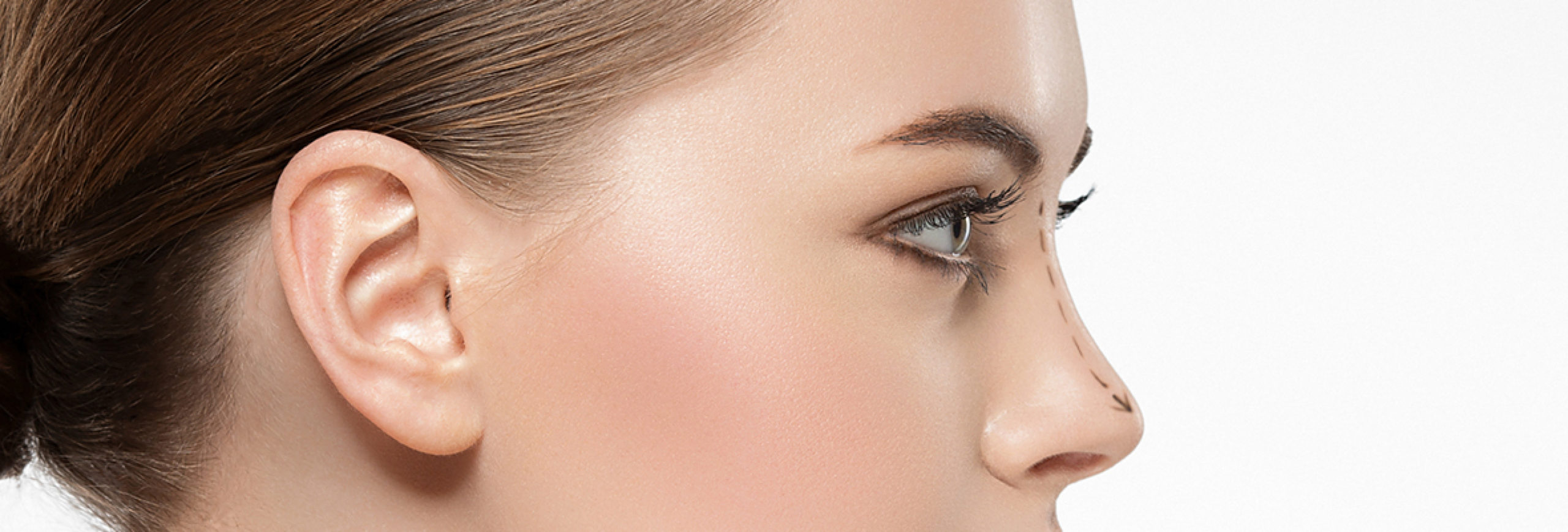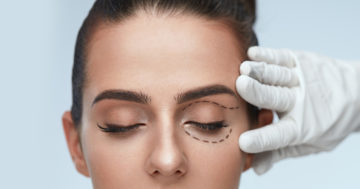Rhinoplasty (Nose Surgery)
Surgical Procedure
There are several techniques used to perform this procedure. An incision may be made under the rim, or within the nose, and the soft tissue separated. The bone and cartilage is then re-sculpted and the skin sealed with fine sutures to minimize scarring. Patients with a deviated septum may have it corrected during surgery to improve breathing problems. Prior to surgery your surgeon may place drops in your nose to eliminate bleeding during surgery and constrict blood vessels.
1 NIGHT
3 - 5 HOURS
GENERAL ANAESTHESIA
Pre Operative Care
 Before surgery please inform your surgeon of any allergies, all medical conditions, and any medication that you are taking (both prescription and non-prescription).
Before surgery please inform your surgeon of any allergies, all medical conditions, and any medication that you are taking (both prescription and non-prescription).  To eliminate the chance of post op. bleeding you should avoid aspirin and any medication containing brufen for two weeks prior to surgery.
To eliminate the chance of post op. bleeding you should avoid aspirin and any medication containing brufen for two weeks prior to surgery.  You should also not smoke for 2 weeks prior to surgery as smoking can affect your reaction to the anaesthetic and slow down the healing process.
You should also not smoke for 2 weeks prior to surgery as smoking can affect your reaction to the anaesthetic and slow down the healing process.  Patients that suffer from hypertension must inform the surgeon prior to surgery. Your surgeon will give you directions on eating and drinking, smoking, taking or avoiding certain vitamins and medications, and washing your face.
Patients that suffer from hypertension must inform the surgeon prior to surgery. Your surgeon will give you directions on eating and drinking, smoking, taking or avoiding certain vitamins and medications, and washing your face.Package Price

Post Operative Care
Following surgery your surgeon may ask you to wear a splint to support the position of the nasal bones. This usually stays in place for about 2 weeks. Gauze packing inside your nose may also be needed to avoid bleeding. This is usually removed the day after surgery.
Your surgeon will advise you when you may resume normal activities. You should not blow your nose for the first two weeks after surgery and avoid bumping or rubbing your nose for the next 3 months. Glasses should not sit on the bridge of the nose for the first month. Avoid any strenuous activities that may increase your blood pressure such as running, swimming or bending as this may cause your nose to bleed in the first month. Be gentle when washing your face and avoid fragrances that may cause you to sneeze. You may be required to remain in Thailand for 2 weeks for your surgeon to monitor your progress.
Recovery
Most Rhinoplasty patients recover quickly and are able to move around shortly after surgery. You may not wish to return to work for approximately 2 weeks as you may suffer severe bruising and swelling around the eyes.
Risks and Complications
Complications with Rhinoplasty are rare. Nevertheless, there is always a possibility of infection, nosebleeds, or a reaction to the anaesthesia. You can reduce your risks by closely following your surgeon’s instructions both before and after surgery.
Following surgery, small blood vessels may appear on the skin’s surface. These are usually minor, and can be corrected with a laser which eradicates the capillaries.
As for scarring, when Rhinoplasty is performed from inside the nose, there is no visible scarring at all; when an “open” technique is used, or when the procedure calls for the narrowing of flared nostrils, the small scars on the base of the nose are usually not visible.
Results
After 2 weeks your bruising and swelling should have subsided and no one will be able to tell that you have had surgery. The result is a natural appearance with your nose more in proportion to the rest of your face. It may take up to 12 months before you see your final result.



